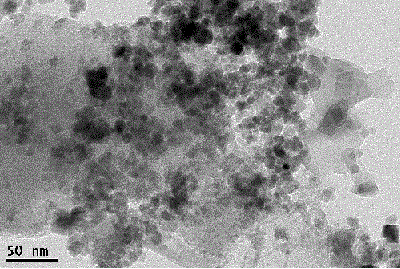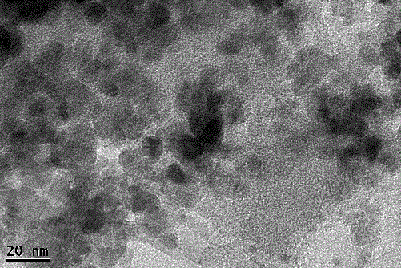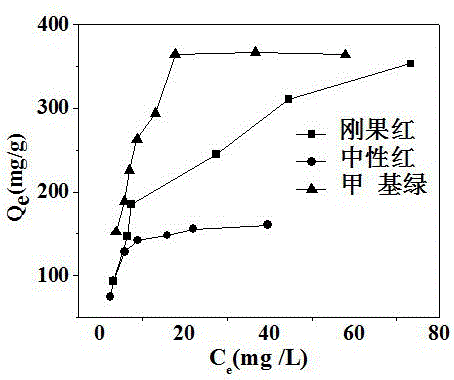Preparation of magnetic biomass charcoal and adsorption of magnetic biomass charcoal to dye
A biomass and magnetic technology, applied in the direction of adsorption of water/sewage treatment, water pollutants, alkali metal compounds, etc., can solve the problems of easy agglomeration of magnetic nanoparticles, and achieve strong surface adsorption, good superparamagnetism, good The effect of stability
- Summary
- Abstract
- Description
- Claims
- Application Information
AI Technical Summary
Problems solved by technology
Method used
Image
Examples
Embodiment Construction
[0018] The preparation method of magnetic biomass charcoal composite material can be divided into two steps in detail: First, the preparation of biomass charcoal. The fallen leaves of Fallon were washed with distilled water and dried at 50°C. The fallen leaves are ground and screened with 60 mesh molecular sieves. Place the leaf powder in an alumina porcelain boat and put it in a tube furnace. Under argon, the temperature is increased to 800°C at a rate of 5°C per minute and kept at this temperature for 5 hours. Finally, it is naturally cooled to room temperature to obtain activated carbon powder. .
[0019] 2. Preparation of magnetic biomass charcoal. Take activated carbon (0.9g), anhydrous FeCl 3 (0.972g) and anhydrous CH 3 COONa (1.5g) in 60mL diethylene glycol, and the mixture was heated under magnetic stirring until completely mixed. Then, the solution was transferred to a polytetrafluoroethylene autoclave and kept at 200°C for 24 hours. After cooling to room temperature...
PUM
 Login to View More
Login to View More Abstract
Description
Claims
Application Information
 Login to View More
Login to View More - R&D
- Intellectual Property
- Life Sciences
- Materials
- Tech Scout
- Unparalleled Data Quality
- Higher Quality Content
- 60% Fewer Hallucinations
Browse by: Latest US Patents, China's latest patents, Technical Efficacy Thesaurus, Application Domain, Technology Topic, Popular Technical Reports.
© 2025 PatSnap. All rights reserved.Legal|Privacy policy|Modern Slavery Act Transparency Statement|Sitemap|About US| Contact US: help@patsnap.com



